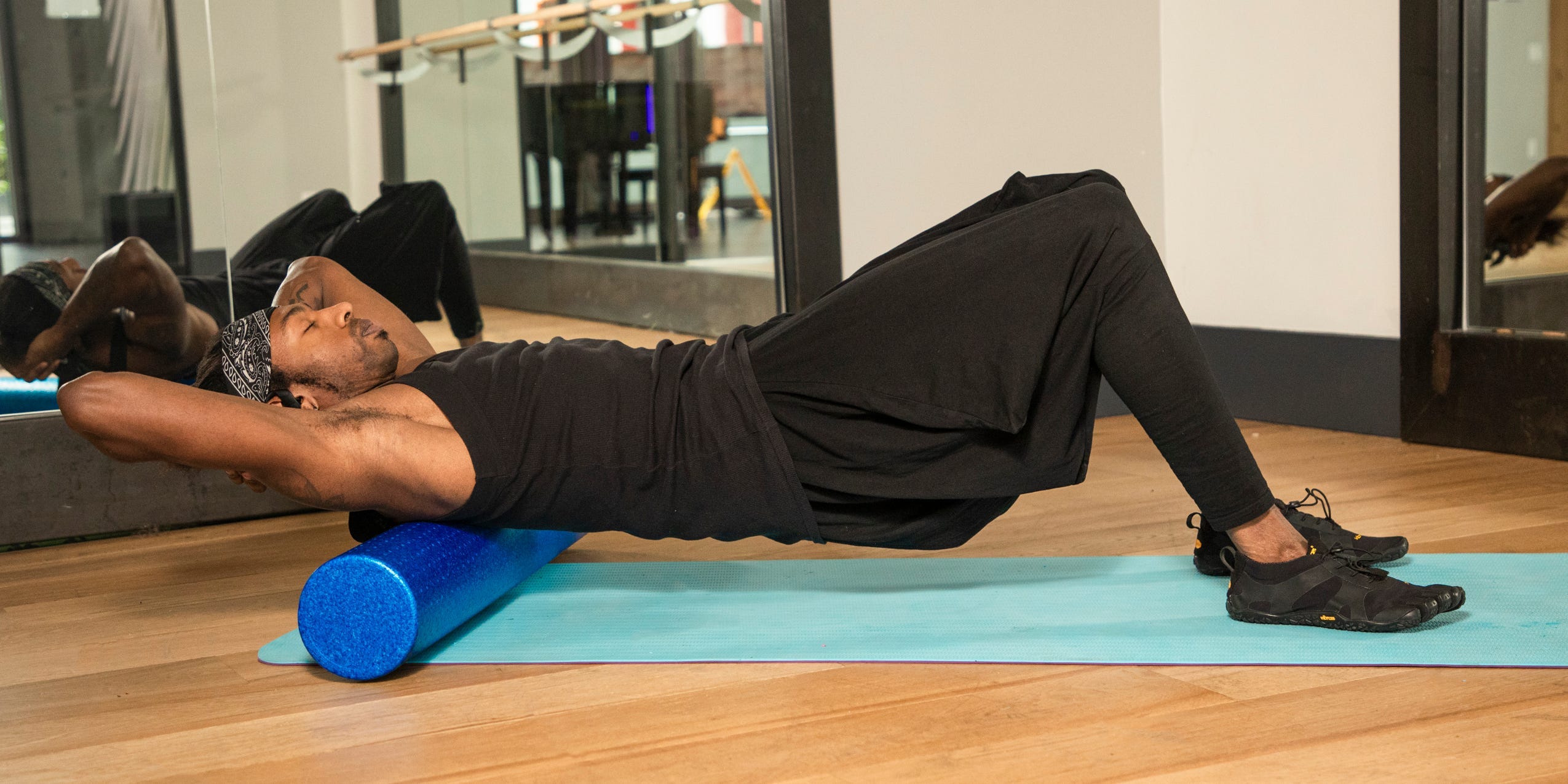- Using a foam roller may help your body recover faster and more effectively after exercise because it can aid in tension release.
- You can foam roll specific areas of the body including the back, IT band, hips, calves, and hamstrings.
- It’s important to foam roll your body correctly to prevent injury.
- This article was medically reviewed by Joey Thurman, CSCS, CPT, FNS, a Chicago-based fitness expert and MYX Fitness coach.
- Visit Insider’s Health Reference library for more advice.
According to the American Council on Exercise, foam rolling (also known as self-myofascial release) can help you recover from workouts faster and more effectively.
Joy Puleo, program manager at Balanced Body Education, recommends foam rolling before, during, or after your workouts. “You can also roll a few moments in the morning or before heading to bed,” she says.
Puleo says that most people like to foam roll after their workouts when muscles are warm and ready for the benefits of foam rolling, while others prefer to target problem areas before working out to prepare the muscles.
There are some risks involved when using a foam roller, such as hurting your joints, rolling over muscle tears or breaks, or causing pain, so it is important to know how to use one properly. Learn about the best practices and specific techniques that can help you foam roll safely.
Basic foam rolling tips
When using a foam roller, avoid smaller joints like the knees, elbows, and ankles. You should also avoid foam rolling if you have an injury, such as a muscle break or tear.
While rolling, take deep breaths to help move oxygen into your muscles.
Remember to move your body slowly over the foam roller and pay attention to how it feels. While it's normal to feel a little pain at first, stop immediately if it persists.
Puleo suggests stretching specific areas of the body with a foam roller, including the back, IT band, hips, calves, and hamstrings.
How to foam roll the back

- Place the roller at the bottom of the shoulder blades.
- Lift your hips into a small bridge.
- Cross your arms over your chest.
- Roll the foam roller up and down your back using your legs to initiate the motion.
Puleo advises not to roll past the bottom of the rib cage. "This area is very sensitive to pressure," she says. Also avoid this foam rolling stretch if you have osteoporosis of the spine or any condition where the pressure is continuously painful.
How to foam roll the IT band

- Lie on your side.
- Place the roller under the outside of your thigh.
- Support your torso by placing the forearm on the mat and lift up.
- Engage your abs to keep your legs straight.
- Roll up and down from your glute to just above your knee.
- For a gentler massage, place the top foot on the mat in front of the bottom leg.
- For a more intense experience, place both legs on the roller with the inner thighs together.
Due to its fibrous nature, the IT band is prone to "getting very tight and often painfully so," says Puleo. "The IT band is not essentially a muscle, but rather a fibrous connective tissue that helps provide stability for the hip, leg, and knee," she says. Some people may prefer a gentler IT band foam rolling experience.
How to foam roll hip flexors

- Place the roller under your left hip flexor with the upper body in an elbow plank/hover position.
- Keep your right leg in a comfortable bent position.
- Roll up and down and side to side over the foam roller.
- Your right leg should remain in one spot while your left foot moves to help you roll.
Make sure to switch sides to stretch your right hip flexor, too.
How to foam roll calves

- Sit on the mat with the roller under your calves.
- Support your upper body with your hands on the mat behind you.
- Lift the hips off the mat.
- Roll up and down the calf using your arms to move your lower body.
How to foam roll hamstrings

- Sit on the roller, balancing it under your right thigh.
- Place your hands on the mat behind your body.
- Bend your left leg and place your foot on the mat.
- Lift your hips and use your arms to support your weight.
- Pull your abs in and around the lower back to pull the hamstrings over the roller.
Make sure you switch legs to roll both hamstrings. The American Council on Exercise advises moving about an inch per second while foam rolling specific body parts and to focus on tense areas for up to 90 seconds.
The bottom line
Initially, you might feel some pain while using a foam roller, but it should quickly subside. "As you roll, the tight structures will let you know, but in short order you should feel them release," says Puleo.
If pain persists while foam rolling over a specific area, avoid rolling over that body part. Never use a foam roller over joints, bruises, inflamed areas, or open wounds.
Related articles from Health Reference:
- The health benefits of foam rolling and how to add it to your workout routine
- 5 of the best stretches to relieve lower back pain — and how to do each correctly to prevent injury
- 5 major health benefits of cycling and how to bike safely
- Running builds muscle as long as you're challenging yourself — here's how to build muscle and run faster
- 5 common injuries that cause knee pain while running — and how to treat them
